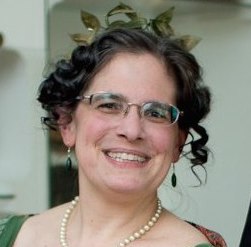On January 25, 1862, a dramatic little story appeared in a column in The Philadelphia Inquirer, “The New York Letter”, which covered news from New York City. The United States was eight months into the Civil War against the Confederacy (formally, the Confederate States of America, or C. S. A.), and New Yorkers were on the alert for Confederate spies, or “Secesh” (secessionists). So it was quite alarming for a gentleman to notice, in a paint shop,
several suspicious looking bundles, boxes, etc., marked “C. S. A. Sutler’s Department,” “C. S. A. Medical Department,” etc.
He reported the items to the police, and detectives were duly assigned to watch the shop, where, on the evening of January 23rd (going by the date of the column), they noticed someone leaving the premises,
enwrapped in a long cloak and scarf, carrying the suspicious bundles under his arm
Suspicious indeed! The detectives followed him to a house, which he and dozens of other cloaked men entered. Was it a secret meeting of spies? Smugglers? Terrorists? Police surrounded the house, but after sending one policeman inside to reconnoiter, they abruptly retired from the scene.
Why did they leave? And what does this have to do with dance, anyway?
It turns out that the boxes were props. All those suspiciously cloaked men were attending a masquerade, and the man with the “C. S. A.” boxes was going in the character of a “Confederate Doctor”.
The moral of the story:
Never choose a masquerading character from “Secesh.” This is not the time to make larks of this character prudent.
True story? Or fiction for the purpose of warning overly-frisky young gentlemen that there are limits in wartime? I can’t really say. There might well not be any traces in the public record of a truly private ball, and I’ve no idea whether police reports from the mid-nineteenth century survive in any form. But the police superintendent mentioned was a real person (John Alexander Kennedy, 1803-1873), and the story is far from impossible. I can imagine something similar happening today, probably with a tragic ending.
The complete text of the original column entry is below.
~~~~~~~~~~~~~~~~~~~~~~~~~~~~~~
The Philadelphia Inquirer
Saturday, January 25, 1862
p. 4
A loyal gentleman of this city some days ago stopped into a paint shop to make some purchases. While there his attention was directed to several suspicious looking bundles, boxes, etc., marked “C. S. A. Sutler’s Department,” “C. S. A. Medical Department,” etc. Immediately “smelling a rat,” he went and laid the information before Superintendent Kennedy, who, scenting treason, ordered the store to be watched by the detectives.
Last evening, about dusk, an individual left the premises, enwrapped in a long cloak and scarf, carrying the suspicious bundles under his arm. He was immediately tracked by the vigilant detectives to a house in Sixth avenue, which he entered. He was followed by dozens of other men, also wrapped in cloaks. The police, to the number of fifty, surrounded the building, and one of them entered to make an examination. — He returned and whispered to his chief, who ordered the policemen to retire, which they did.
The affair was hushed up, but it leaked out, somehow or other. The suspicious movement had culminated in a private masquerade ball, and the mysterious parcels were but part of the outfit of an assumed “Confederate Doctor.” Mem. — Never choose a masquerading character from “Secesh.” This is not the time to make larks of this character prudent.
Thanks to John Newbold for sending me this clipping.


Leave a Reply